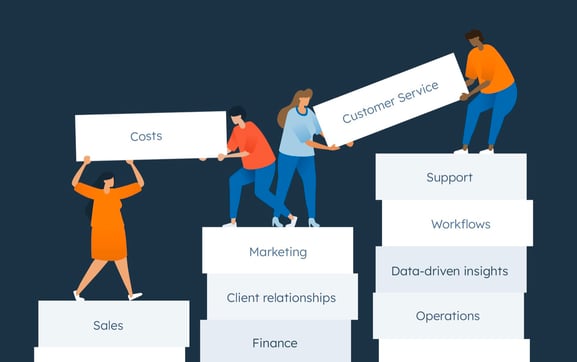The training landscape appears to be like a large amount distinctive than when educators past gathered in particular person for ISTE’s once-a-year convergence of classroom tech aficionados.
So a lot so that CEO Richard Culatta thinks of functions in two types: B.C. and A.D. That’s “Before COVID” and “After Condition,” he reported Sunday from a New Orleans phase. It was the official welcome to the organization’s initial in-person convention considering that the pandemic sent the nation into quarantine. (ISTE is the parent firm of EdSurge, nevertheless we work with editorial independence.)
Consider entry to products. Just after COVID-19, the proportion of college districts with 1:1 devices for pupils shot up from 50 p.c to 90 percent, Culatta informed the viewers. It was a impressive shift—but just one accomplished in assist of what he termed “emergency distant studying.”
“Let’s make certain we’re not conflating unexpected emergency distant studying with productive digital mastering,” he mentioned. “The primary difference between all those two is just one is developed on a reliable basis, inclusivity and rules of ISTE requirements.”
The previous two a long time have shown a need for better learning environments, Culatta said, and he shared four shifts he thinks are desired to reach them.

Do Around Really do not
Faculties routinely body their electronic citizenship expectations for students as a prolonged list of don’ts, Culatta stated. 1 school’s features a whopping 35 things not to do.
Culatta suggests what would advantage students far more is a very clear define of what educators want them to find out from electronic tools.
“This is a intricate globe, and you are not able to apply not undertaking a thing,” he mentioned. “If you want to exercise remaining profitable in the digital environment, you have to follow the do’s.”
He spotlighted the initiatives of La Cañada Unified College District in California, which went beyond instructing versus cyberbullying and as an alternative promotes very good electronic citizenship with a “cyberbuddies” program.
“The least exciting detail we can use know-how for is to supply written content. The most exciting matter we can use it for is to hook up people today.” Unquestionably! #ISTElive @iste pic.twitter.com/RFzYuYn0nr
— Ashley Morrison (@IHMSMorrison) June 26, 2022
From On the net Protection to Electronic Wellbeing
To illustrate his upcoming position, Culatta employed his daughter’s flight faculty schooling as an illustration. Of class safety is component of what she’s studying, but it’s not the entirety of her training mainly because security is not the intention of learning to fly.
“It’s to defy gravity and pay a visit to remarkable spots,” Culatta said. “Online security is a pretty small bar. We’ve bought to purpose a little bigger.”
Generating superior digital citizenship is a “team sport” that will take not only lecturers but the complete faculty and moms and dads, he included.
“If they have a healthful digital lifestyle at home, you have a nutritious electronic tradition at university,” he said.
Building Connections
Culatta questioned individuals to remember the Speak & Spell, a basic ‘70s and ‘80s toy that did what the name promised: spelled aloud the words and phrases typed into it. It was a genius concept again in its time, he stated, but not how technological innovation really should be utilised nowadays.
“The minimum fascinating point we can do with tech is to present information,” he said. “The most fascinating point we can do is connect people together.”
Sunday MainStage at #ISTELive, it’s time to thrive and concentration on Digital Wellbeing and effective #digitallearning thank you @RCulatta @iste #ISTELive ! pic.twitter.com/ECBPvuTTYx
— Becca Tessarolo (@BeccaTessarolo) June 26, 2022
Considering Digital Pedagogy, Not Tech Skills
It looks counterintuitive, Culatta explained, but new instructors are normally the minimum helpful when it will come to utilizing technologies in the classroom.
That can be a difficulty for faculties. Culatta shared the concerns of one particular superintendent who wanted to know that new academics in his district’s colleges “won’t have to have major remediation in conditions of their technologies techniques.”
“Sometimes we use [the term] ‘digital native.’ It turns out you can find minor correlation amongst powerful tech use and employing tech for understanding,” he mentioned. “We have 350,000 new academics getting into the classroom this coming 12 months, we have to make confident they’re coming ready.”
Additional than 50 institutions with educator planning programs have taken ISTE’s Digital Equity and Transformation Pledge to put into practice ISTE requirements for effective educating with technological know-how.

Deliver the Joy
Culatta finished his opening keynote with a request. The past two a long time have been so challenging that he problems educators have shed some of the pleasure they obtain in the discovering house. What he explained classrooms will want this coming yr is “a key infusion of joy.”
“If I can request you, ‘Spend some time contemplating about what provides you pleasure,’” Culatta mentioned, “and, ‘How can you aid infuse that pleasure into all parts of studying at a time when we desperately want it?’”
ISTE attendees quickly obliged. Right after the closing keynote speaker (filmmaker Zach King adopted Culatta), David Lockett and Tara Linney acquired married on phase in the conference’s 1st-ever marriage. The couple met as ISTE volunteers, organizers say, making the mainstage a fitting locale for exchanging their vows.
Our Initial ISTE Wedding day! Be a part of us in congratulating @DavidJLockett and @TaraLinney! #ISTELive 🎉🎉🎉 pic.twitter.com/rtTCfyoc9u
— ISTE (@iste) June 26, 2022





More Stories
English Language Teaching and Learning: Creating a “Smart” Classroom
Science and Technology, IT And Space
Universal Design and Assistive Technology